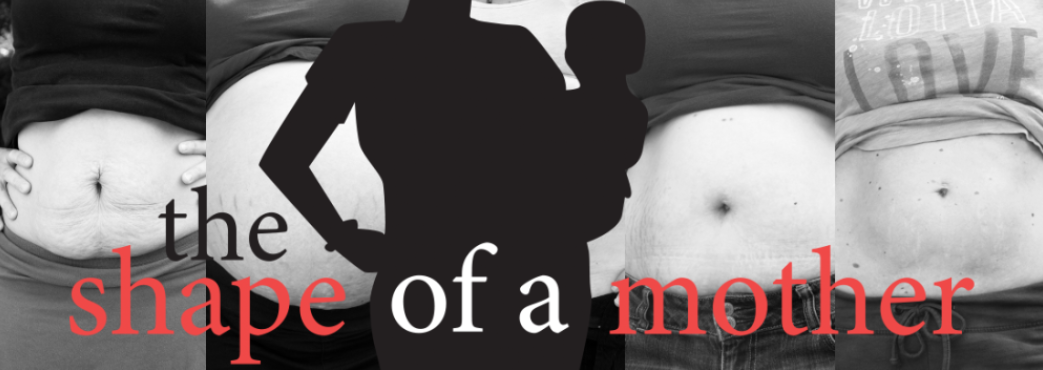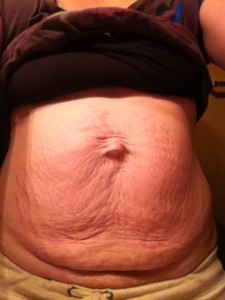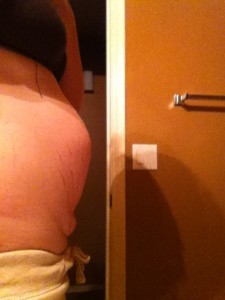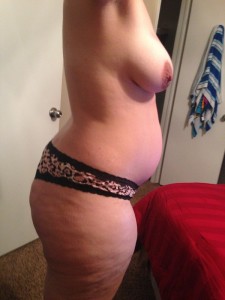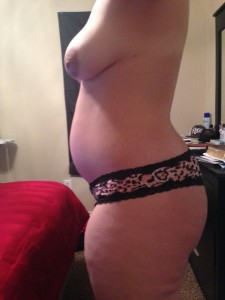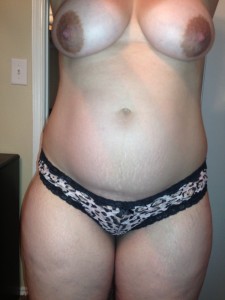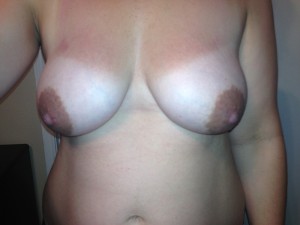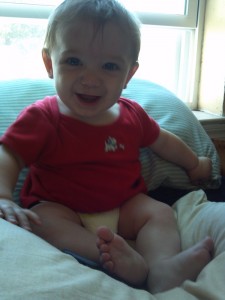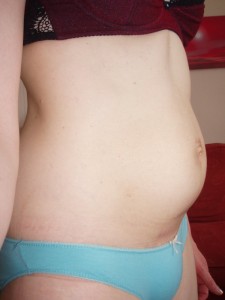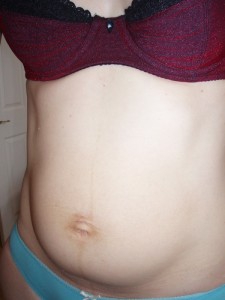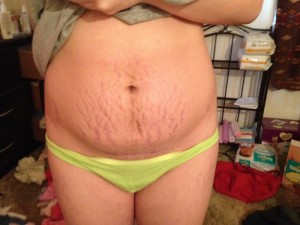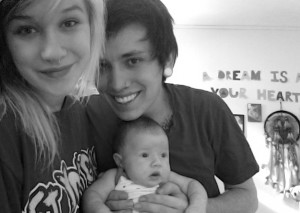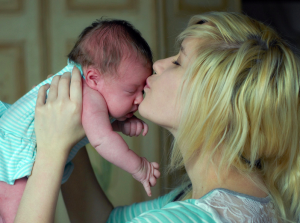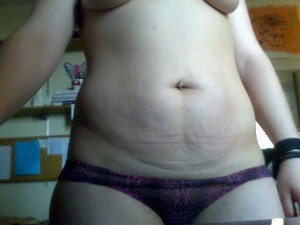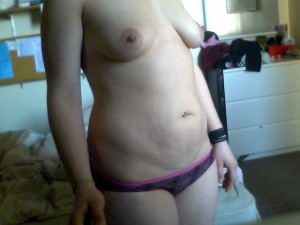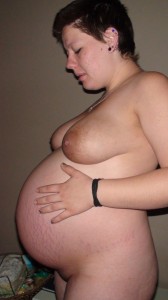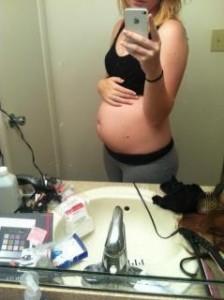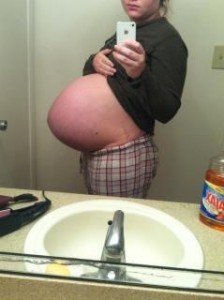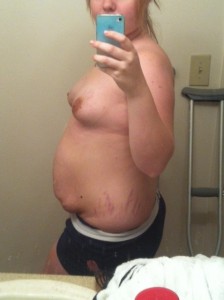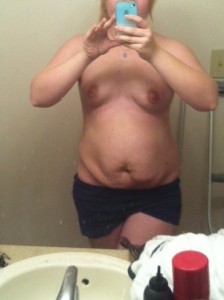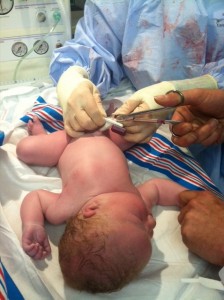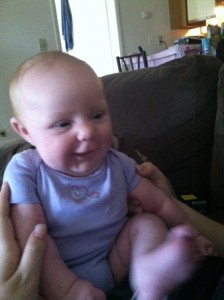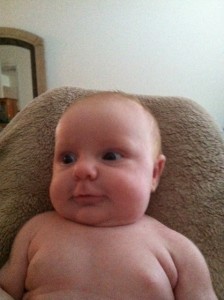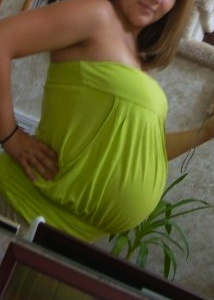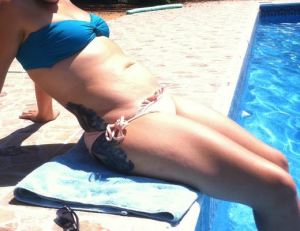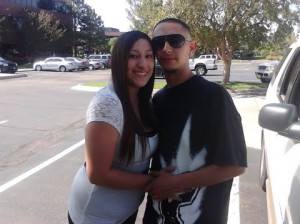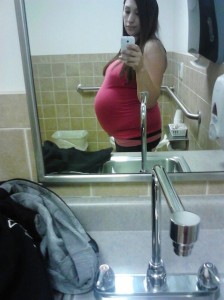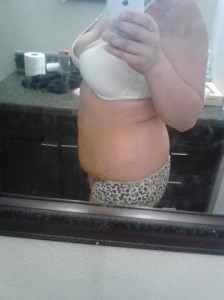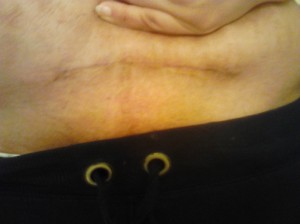Previous post here.
When I was six months pregnant, I stepped out of the shower one day and caught a glimpse of myself in a full-length mirror. Looking at my bulbous belly, I realized then and there that the only way my daughter – I already knew the baby was female – could be born was by caesarean section. I went into labour naturally three months later. After 36 hours of futile pushing, however, I found myself strapped to an operating table as a team of doctors cut my little girl out of my abdomen. (I was conscious during the surgery.)
My caesarean was necessary. The baby was too big; I was too small; and without medical intervention, both she and I would likely have died. That knowledge didn’t necessarily make recovery any easier: I distinctly remember my bandaged belly aching whenever I laughed and my stitches moved. Three days afterwards when a nurse took off my bandages and stitches, an angry red mark greeted me where I’d literally been sliced and diced.
The next few weeks were a blur of breastfeeding, diaper changing, setting up my computer so that I could work at home, and touching base once again with friends and colleagues. I didn’t reflect in any great depth on how my daughter was born. But then one morning in July (about two months after the birth), it seemed to all come back to me, almost out of the blue. On one hand, I wasn’t particularly surprised at having had to give birth abdominally. I was almost 39 when my daughter was born, and older first-time mothers are at greater risk of delivery complications. My three sisters all had their children by caesarean for the same reason I did: baby too large, mother too small (in medical terms, cephalopelvic disproportion). Add the fact that I’m fairly narrow in the pelvis, and I knew even before seeing my bulging belly in the mirror that my chances of being sectioned were fairly high. Nonetheless, it was a bit disconcerting to contemplate the fact that without modern medical technology, I would most likely be dead now. In a sense, my body had failed me.
Since that July morning, I’ve read a great deal about other women’s reactions to having a caesarean section. At one end of the spectrum, some mothers feel cheated of a ‘real’ birth experience by not being able to deliver vaginally. Other women in contrast specifically request a caesarean even without medical indication because they do not want to go through what they view as the pain of a so-called normal birth (famous example: Britney Spears). I admit that during the last weeks of my pregnancy, I briefly toyed with the idea of asking my obstetrician to give me a c-section because I didn’t exactly relish the thought of suffering through labour. Then I had the fantasy of labouring without a hitch and triumphantly expelling the baby in one or two big pushes. I did indeed go through labour – and ended up with major surgery and a cut belly nonetheless.
This May 8, that will be six years ago. The angry red mark that awaited me when my bandages were removed is now a small white line along my abdomen. It’s fairly inconspicuous, but it is visible. As one of my nieces said, ‘Aunt Emilia had a crack on her tummy.’ It’s really the only tangible bodily sign that I actually gave birth: I don’t have stretch marks; my breasts haven’t changed at all despite nursing my daughter for over two years; and all my pregnancy weight was gone in two months.
As with the operation itself, women’s feelings about their caesarean scars vary from person to person. One woman interviewed in a 1980s book on pregnancy and childbirth felt inconvenienced by her scar because she, in her own words, had a thing for ‘bikinis and such.’ On the other hand, a second woman who had undergone a c-section said she looked on her scar as a badge. My own feelings about my scar are more like those of the latter woman. I remember a discussion with an ex-boyfriend (not my daughter’s father) where he told me that if I had a caesarean, I’d always have to wear a one-piece bathing suit because otherwise everyone would see the mark on my belly. ‘Oh, but you’d probably be proud of your scar,’ he added immediately afterwards.
I am proud of my scar. I don’t feel I have to hide it if I go to the beach, for example. And any sense of failure I might have at not being able to give birth ‘normally’ has long dissipated. I am also aware that if I ever get pregnant again (a very unlikely occurrence, for lack of both desire and – at 44 – ability), I will in all probability need another caesarean. A VBAC (vaginal birth after caesarean) would not likely be in the cards for me if I ever found myself ‘with child’ now.
Six years later, my caesarean section seems less of a ‘major surgery’ than simply the way that my daughter came into the world. So in that way, my scar and the operation that led to my daughter’s birth seem worth celebrating.
